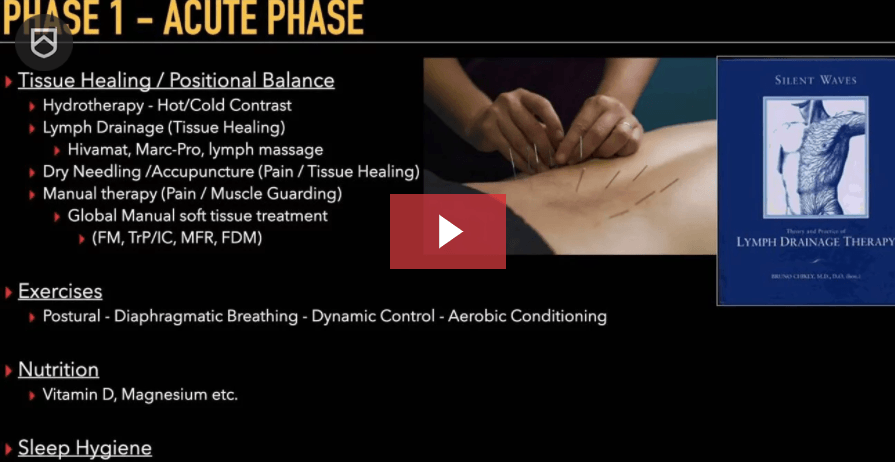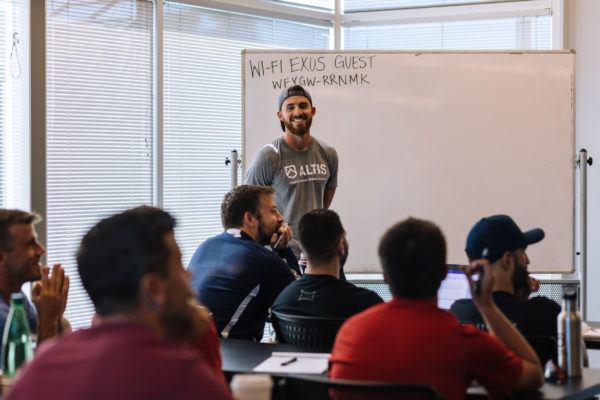We have reached out to our neighbors here in Phoenix, AZ quite often over the last year to have discussions around bringing practical sports medicine to the forefront of human performance. As part of this initiative, we have secured two video presentations (with more to come!) from our local network in professional sport. These videos can be found for FREE on the ALTIS 360 platform and below you will find a short summary of each.
The first presentation comes courtesy of Dr. Adam Loiacono, Director of Rehabilitation for the NBA’s Phoenix Suns.

In this hour long presentation, Adam unveils the Return to Play process following a Grade II-III ankle sprain in professional basketball.
Using his 3 Ps (Principles, Process, Plan) as the outline, Adam sets the stage with the importance of movement, force, and fitness (the principles) before highlighting the role of experimentation and exposure (the process).
From here he dives into the plan, which is “predicated on contextual factors along a continuum from health (homeostasis) to sport (the terminal task)” with therapy, training, and performance falling in-between.
Along each of these 5 stages it is imperative to identify who the experts are, what the Key Performance Indicators (KPIs) are, and how they will be targeted with specific goals.
Using the middle of the continuum, training, as an example…
The experts involved at this stage are the Strength & Conditioning Coach and Performance Therapist. The KPIs include swelling, along with subjective measures of running quality and multi-directional quality. The subsequent goals then include running and multi-directional re-education, and introduction to basketball activity.
So what does this look like in action?
Within the training room…proprioceptive training, blood flow restriction, and ankle manual therapy.
Within the weight room…lunge patterning, marching, and skipping.
On the basketball court….shooting, ball handling, and scripted 1v0 scenarios.
Furthermore, combining the principle of force and process of exposure into the training stage a few key points include utilizing isometric actions before tempo before dynamic actions as well as anticipatory activities before reactive activities.
Check out the full-length presentation to follow along as Dr. Adam Loiacono guides us through the actionable items as his team progresses along the continuum from health to sport following an ankle sprain.
…
The second presentation comes from Ben Hagar of the Arizona Diamondbacks (Major League Baseball) and is titled, Management of Abdominal Strains in Baseball.

The video begins with an epidemiological overview of oblique injuries in baseball. One study found that over a 5-year period from 2011-2015 there were on average about 200 injuries per year!
The majority of these injuries (70-80%) occurred on the contralateral side, so for a right-handed thrower the injury would be on the left side, and the average days missed was 22 days.
While Ben mentions many of the possible ‘why’s’ behind these injuries – such as workloads, nutrition/hydration, and more – a major element he goes into within the presentation is postural/positional and using a movement lens.
With a guiding principle of ‘structure governs function and function governs structure’ the aim is to address position and postural control and incorporate efficient movement patterns and sequencing.
But what actually happens once an injury occurs?
The bulk of this presentation answers that very question.
First comes a local exam (active range of motion, strength testing, imaging etc.) followed by a global exam once ‘pain no longer drives the pattern’.
The process then enters a 5-stage process (acute, sub-acute, intermediate, return to sport, return to performance).
Within the presentation, Ben goes into great detail describing each stage and the progressions between. He also includes plenty of practical videos which were great. For this overview I will provide a few notes on each phase…
A guiding principle Ben uses in Phase 1 (Acute) comes from a mentor of his and says to ‘treat the player, not the injury’. With this, there is no set protocol and activity tolerance guides progression. Hydrotherapy, lymphatic techniques, needling, and manual therapy can all be utilized here and exercise are postural and target dynamic control. A few other elements include aerobic conditioning, diaphragmatic breathing, and supplementing with Vitamin D and Magnesium.
The athlete moves into Phase 2 (Sub-Acute) once guarding has subsided during basic activities.
Phase 3 (Intermediate) commences once there is no pain during the strength testing evaluation. It is important to note that there will likely still be ‘awareness’ at end-range.
Once the Medical Doctor provides clearance, Phase 4 (Return to Sport) is initiated. Here there is tolerance of baseball activity and strength progressions.
In Phase 5 (Return to Performance)…actually, wait.
The amount of information, detail, and practical examples provided by Ben is tremendous and nothing I could write here would do it justice.
You’ll just need to check out the presentation from Ben Hagar to get an in-depth understanding on the handling of soft tissue injury in professional baseball.

